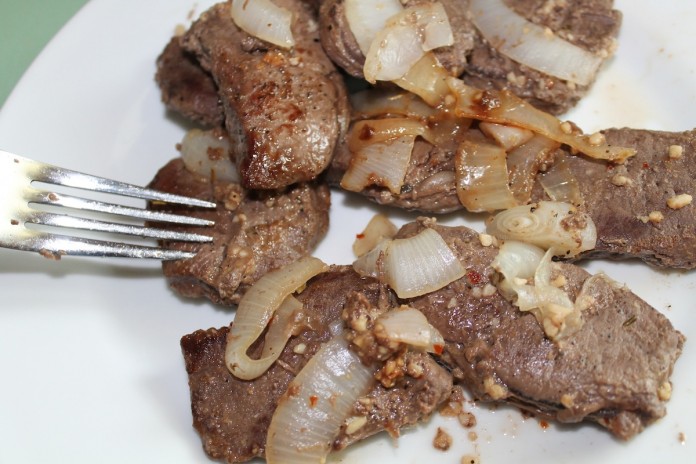By Tracy Turner | Ohio State Chow Line
“Hunting season starts soon, and we want to make sure we safely prepare any meat that we bag. Can you share some tips on how to do so?”
Deer hunting season in Ohio begins tomorrow, Sept. 28, and runs through Feb. 2, 2020. Last year, hunters in Ohio checked 172,040 white-tailed deer, and more than 250,000 white-tailed deer the prior year, according to the Ohio Department of Natural Resources’ Division of Wildlife.
With that in mind, it’s important that any venison derived from hunting be handled safely to avoid the spread of foodborne pathogens, which could cause foodborne illnesses. Venison is meat from wild game such as deer, elk, moose, caribou, antelope, and pronghorn.
Pathogens such as E.coli, salmonella, and toxoplasma are typically found in the intestines of wild game and can be easily transferred to the meat during butchering. Safe food handling during the butchering process will reduce the risk of consumers developing foodborne illnesses from these pathogens, according to Melinda Hill and Treva Williams, both educators in family and consumer sciences for Ohio State University Extension.
“Parasites and tapeworms are also commonly present in wild game,” they wrote in Freezing and Canning Venison, a recent Ohioline fact sheet.
Ohioline is OSU Extension’s free online information resource and can be found at ohioline.osu.edu. OSU Extension is the outreach arm of The Ohio State University College of Food, Agricultural, and Environmental Sciences.
“One common parasite is Toxoplasma gondii, the cause of the disease toxoplasmosis,” they wrote. “Symptoms of illnesses caused from consuming parasites can range from mild discomfort to severe illness and possibly death. To destroy the parasites, you can freeze the meat for 24–48 hours or cook it to an internal temperature of 160 F.”
Other tips
Other tips Hill and Williams offer to safely handle unprocessed venison include:
- Ensure that all venison is chilled within three to four hours of the kill, if hunting on a day when the temperature is over 40 degrees Fahrenheit.
- Refrigerate the carcass as soon as possible, for best quality. Please note that freezing it when unprocessed could cause the meat to toughen.
- Cool the carcass quickly by filling the cavity with bags of ice.
- Keep the carcass in the shade, with good air circulation, from the time of the kill until the time of processing.
- Cover the meat with ground pepper and cheesecloth to help deter flies.
- Avoid covering the meat with tarps or wrapping it tightly in any material that could hold heat, as doing so could cause the meat to spoil.
- Do not tie the carcass to the hood of a vehicle or keep it in the trunk during transport.
- Keep the temperature of the meat between 34 F and 37 F from seven to 14 days during the aging process, which is the process used to tenderize and enhance the flavor of the venison.
- Do not age meat that was harvested during warm weather or was not kept chilled, as the meat is not safe for human consumption. Also, if the animal was severely stressed prior to the kill, if the gunshot wound was extensive, or if the animal is under one year of age, the quantity of usable meat will be reduced.
“If you decide to home process the venison, whole cuts of venison may be stored in the refrigerator for three to five days (at 40 F or below) before canning or freezing,” they wrote. “Ground venison may be stored in the refrigerator for one to two days (at 40 F or below) before canning or freezing.”
Chow Line is a service of the College of Food, Agricultural, and Environmental Sciences and its outreach and research arms, OSU Extension and the Ohio Agricultural Research and Development Center. Send questions to Chow Line, c/o Tracy Turner, 364 W. Lane Ave., Suite B120, Columbus, OH 43201, or turner.490@osu.edu.














When you are transporting the caress after the kill where are you suppose to put the caress if not in the back of your truck or tied to the roof of your car?
CC Hall,
You’ll notice that they said not to utilize the “hood or trunk”, as both of those locations would keep the meat warm. The bed of a truck or roof of a car would be alright.